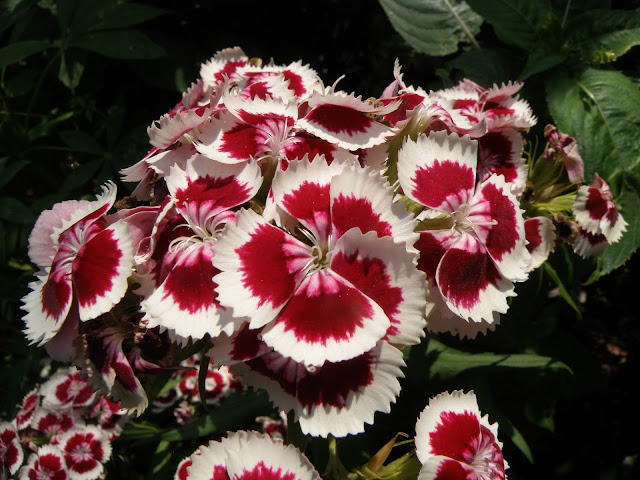It is a floral extravaganza. A colourful heaven of natural beauty just an hour away from the bustling metropolis of Paris. We are at Claude Monet's Garden in Giverny. This is where he lived and worked in the later part of his life. A lovely house opening into a wonderful garden. This was built and nurtured by the master himself.
Claude Monet (1840 - 1926), one of the founders of the French impressionist movement, started painting at a time when most artists preferred to paint in a studio. He broke away from this practice by painting outdoors, using Nature itself as his inspiration. This style was called "impressionism", named after his work Impression, soleil levant (Impression, sunrise). Before his time, it was common for artists to create artworks that were smooth. He began painting with rapid brush strokes. This gave his works their characteristic rough look (when seen from close quarters).
It is a lovely summer day and the gardens are agog with tourists. Many of them are part of groups that have descended from buses, and some like us who have arrived from Paris by train. The green arches lining the path to the house are covered with rose vines. And the whole garden is covered with flowers of different hues.
The house is open, airy and bright, with large windows looking out into the garden. It speaks of the idyllic lifestyle of its residents. All the rooms are done up well, with period furniture and furnishings. The yellow dining room with a huge dining table and the old-fashioned blue kitchen are very warm and inviting. Photography is not permitted in the house, so we do not have any pictures of these charming rooms, but we click to our hearts' content once we are outside in the gardens.
Go to the other side of the road via the tunnel and you find yourself in the water garden.This has been inspired by the Japanese gardens that Monet was familiar with through his collection of prints. This is where the piece de resistance in this complex is located. It is the celebrated green bridge which has been featured in a series of paintings by Monet. It is a small bridge, built across a small pond filled with water lilies. And then there are the weeping willows, and the bamboo grove, more bridges, and of course, the flower beds flaunting blossoms; some rare, some common, but all of them bursting with colour and energy.
 |
---
For more information on the garden, check this.
Enjoy some more pictures from the garden and a picture of a painting by Monet from the bridge series.
 |
| All photos in the garden by Prateek |











Wonderful photos!
ReplyDelete